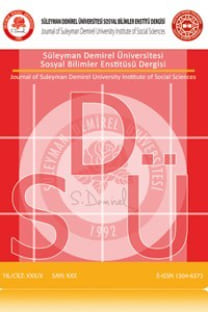ƂUIUɹɐƎL PƎDDILɟ (FLIPPED LEARNING)
flipped classroom, flipped learning
___
- Akaslan, D. & Law, E.L. (2016). “A model for flipping electrical engineering with e-learning using a multidimensional approach”. Retrieved on March 20, 2017 from http://journals.tubitak.gov.tr/elektrik/issues/elk16-24-5/elk-24-5-7-1411-144.pdf Alsowat, H. (2016). “An EFL Flipped Classroom Teaching Model: Effects on English Language Higher-order Thinking Skills, Student Engagement and Satisfaction” Retrieved on April 12, 2017 from http://files.eric.ed.gov/fulltext/EJ1095734.pdf Arnold-Garza, S. (2014). “The Flipped Classroom Teaching Model and its use for Informatıon Literacy Instruction”. Retrieved on March 1, 2017 from http://files.eric.ed.gov/fulltext/EJ1089137.pdf Aşıksoy, G. & Özdamlı, F. (2016). “Flipped Classroom adapted to the ARCS Model of Motivation and applied to a Physics Course”. Retrieved on March 20, 2017 from http://www.iserjournals.com/journals/eurasia/articles/10.12973/euras ia.2016.1251a Aydın, B. & Demirer, V. (2016) “Flipping the Drawbacks of Flipped Classroom: Effective Tools and Reccomendations”. Retrieved on March 18, 2017 from http://www.wjeis.org/FileUpload/ds217232/File/04.betul_aydin.pdf Balcı, Ö. (2017). “An Investigation of the Relationship between Language Learning Strategies and Learning Styles in Turkish Freshman Students”. Retrieved on March 18, 2017 from http://www.ccsenet.org/journal/index.php/elt/article/view/66819/362 63 Başal, A. (2015). “The Implementatıon Of A Flıpped Classroom In Foreıgn Language Teachıng”. Retrieved on March 1, 2017 from http://tojde.anadolu.edu.tr/yonetim/icerik/makaleler/1215published.pdf Başal, A. (2012) “The use of flipped classroom in foreign language teaching,” in Proceedings of the 3rd Black Sea ELT Conference Technology: A Bridge to Language Learning, November 15-17, 8-13. Chang, S. D. (2016). “The Marriage of Constructivism and Flipped Learning”. Retrieved on March 2, 2017 from http://files.eric.ed.gov/fulltext/ED565608.pdf Durak Üğüten, S. (2015). Ögrenen Özerkliği Learner Autonomy. Dıl Ögretımı, Pegem, Editor: BEKLEYEN, Nilüfer, Page number 504, ISBN: 6053182481, (Publish No: 2176284). Durak Üğüten, S. (2016). Yapılandırmacı öğrenme teorisi. In E. Yılmaz, M. Çalışkan & S. A. Sulak (Ed.), Eğitim Bilimlerinden Yansımalar, 105-113, Konya: Çizgi Kitabevi Koç, S. (2016). “The Influence of Flipped Learning on Attitudes of Students towards Technology in 8th Grade Math Lesson”. Retrieved on March 20, 2017 from http://www.ijhssi.org/papers/v5(11)/version2/J05011026168.pdf Kurt, G. (2017). “Implementing the Flipped Classroom in Teacher Education: Evidence from Turkey”. Retrieved on March 19, 2017 from http://www.ifets.info/journals/20_1/19.pdf Nicolosi, A. (2012). “Grammar lessons with the flipped classroom method,” in Proceedings of the 3rd Black Sea ELT Conference Technology: A Bridge to Language Learning, November 15-17, 13-18. Şanal, F. (2016a). Learner Autonomy Issue. Abant İzzet Baysal Üniversitesi Eğitim Fakültesi Dergisi, Cilt 16 (3), 1026-1034. Şanal.F (2016b). Syllabus Design. Journal of Turkish Language and Literature. Volume:2, Issue: 3, 187-192. Doi Number: 10.20322/lt.57312 Thaichay, T. & Sitthitikul, P. (2016). “Effects of the Flipped Classroom Instruction on Language Accuracy and Learning Environment: A Case Study of Thai EFL Upper-Secondary School Students”. Retrieved on March 22, 2017 from http://www.tojet.net/articles/v14i1/14115.pdf Zainuddin, Z. & Halili, S. H. (2016). “Flipped Classroom Research and Trends from Different Fields of Study” Retrieved on March 19, 2017 from http://www.irrodl.org/index.php/irrodl/article/view/2274/3699
- Yayın Aralığı: Yılda 3 Sayı
- Başlangıç: 2005
- Yayıncı: Süleyman Demirel Üniversitesi
İSTANBUL’UN FETHİ VE AKŞEMSEDDİN
ELEŞTİREL ÇOKKÜLTÜRLÜ EĞİTİM ÖĞRETMEN YETERLİKLERİ ÖLÇEĞİ (EÇEÖYÖ): BİR ÖLÇEK GELİŞTİRME ÇALIŞMASI
HEMŞEHRİLİK BİLİNCİ VE KENT KONSEYLERİ: KARAMAN İLİNDE BİR ARAŞTIRMA
SAĞLIK HİZMETLERİ KULLANIMINA ETKİ EDEN FAKTÖRLERİN HASTALIK ŞİDDETİ ALGISIYLA DEĞERLENDİRİLMESİ
ORTADOĞU’NUN HOLLYWOOD’U: MISIR SİNEMASI
SAKARYA ÇEVRESİ DOĞAL BOYARMADDE KAYNAKLARI VE BOYAHANELER
ƂUIUɹɐƎL PƎDDILɟ (FLIPPED LEARNING)
Selma DURAK ÜĞÜTEN, Özgül BALCI
SAĞLIK SİSTEMLERİNİN TEKNİK VERİMLİLİĞİ: OECD ÜLKELERİ ÜZERİNDE BİR ARAŞTIRMA
